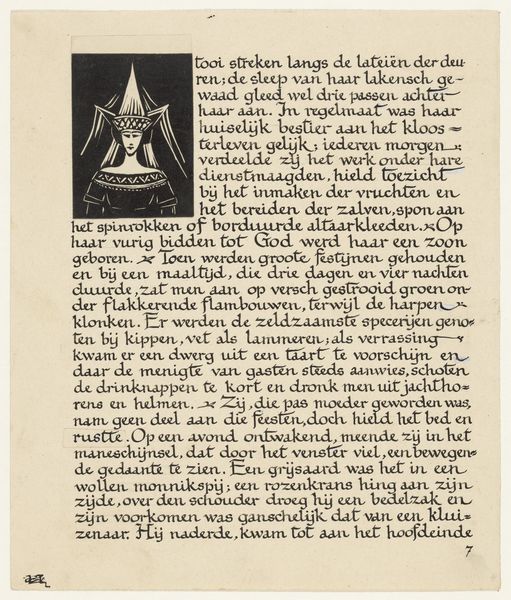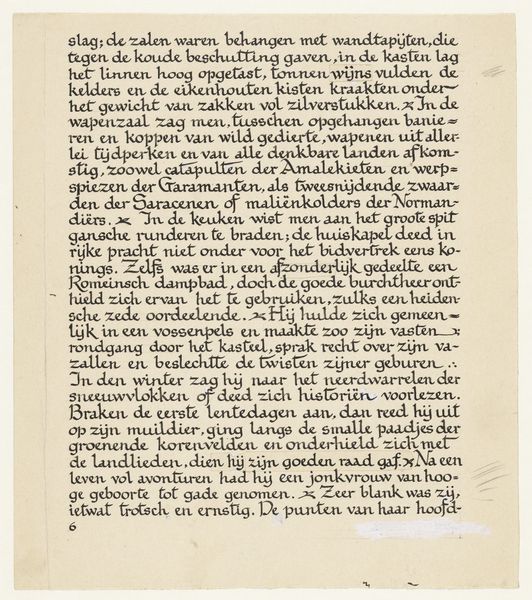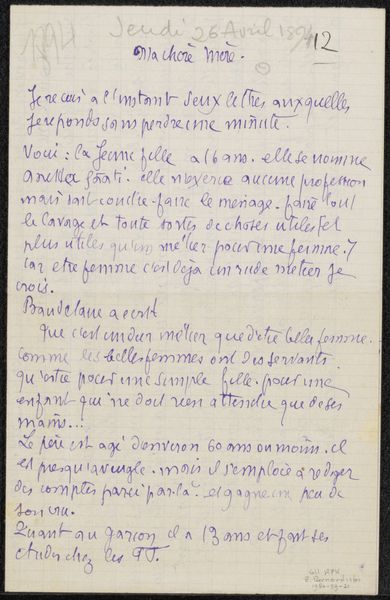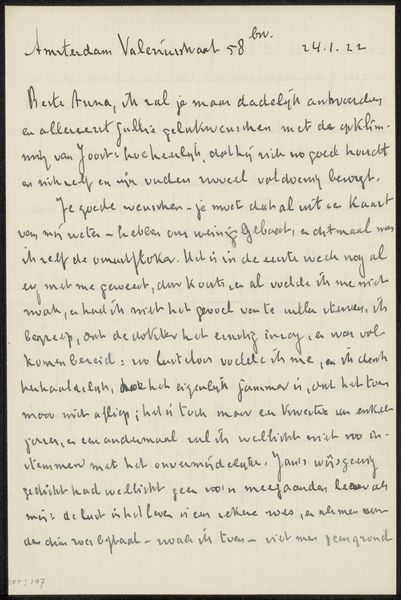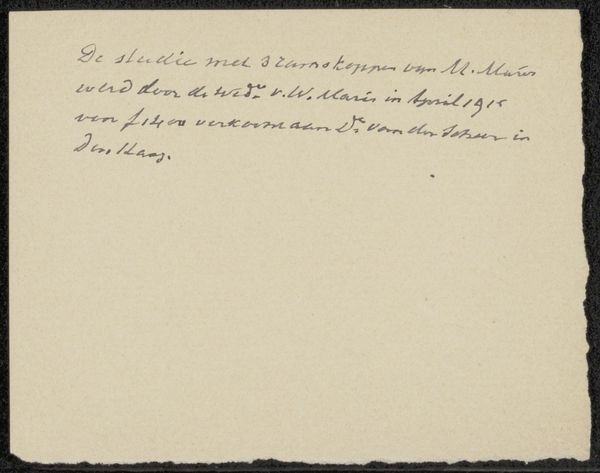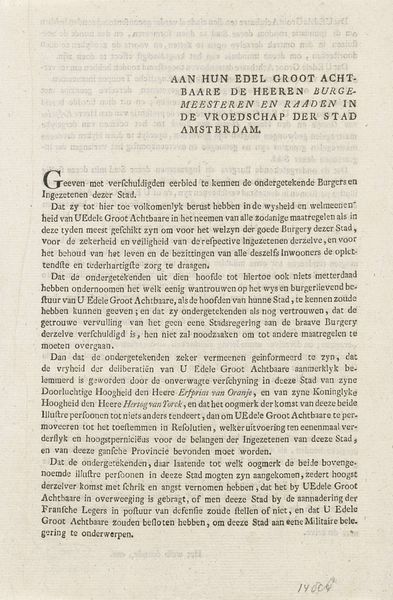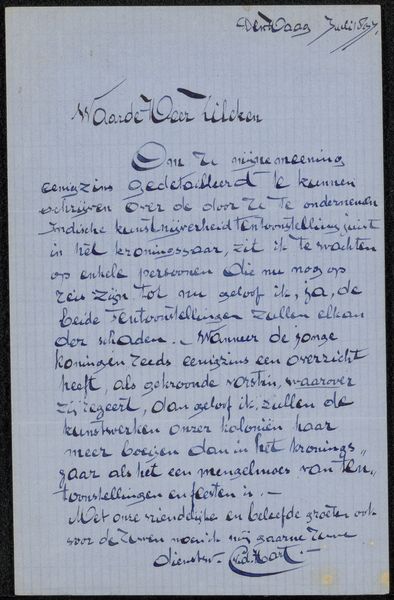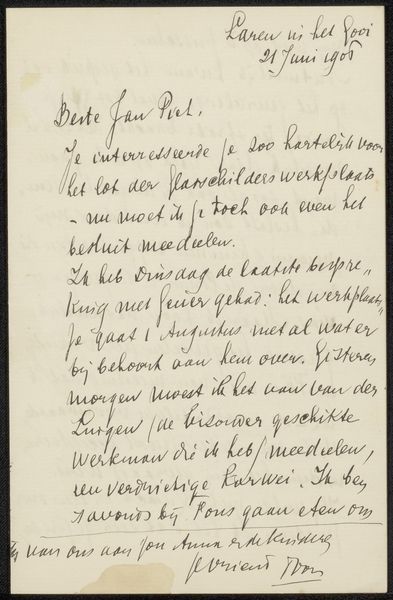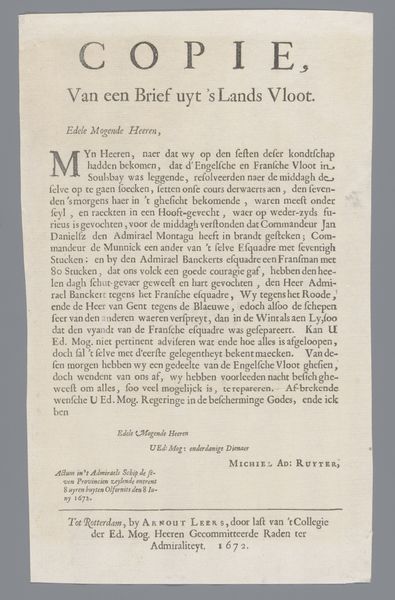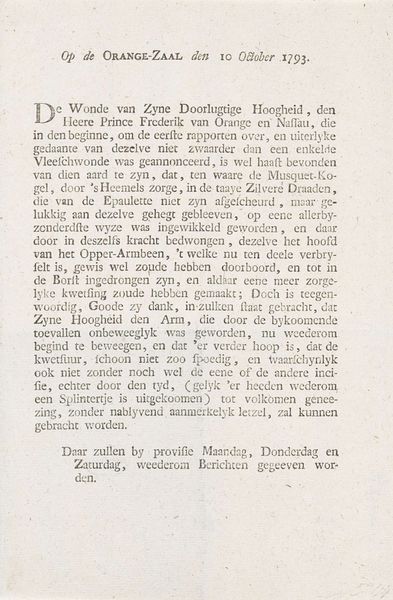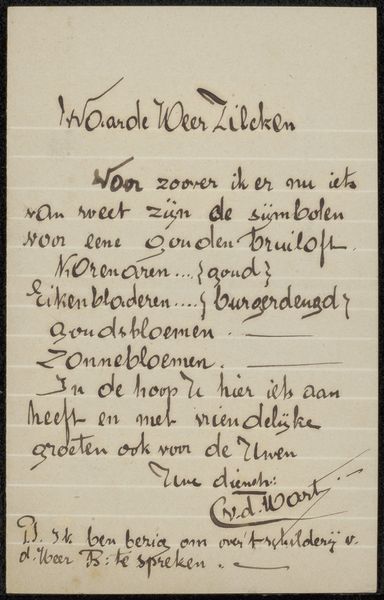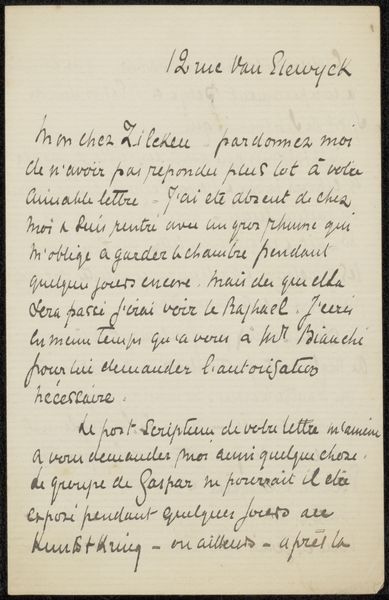
paper, ink
#
paper
#
ink
#
intimism
#
symbolism
#
calligraphy
Copyright: Rijks Museum: Open Domain
Curator: This piece is entitled "Brief aan Jan Toorop," dating back to before 1904. It is presumed to be from April 1901 given that is the date written on it, and its creator is the German poet Stefan George. Executed with ink on paper, the letter reflects the symbolist style. Editor: Immediately, the elegant, almost wistful script, the use of ink on paper, create such an intimate atmosphere. It speaks to a quiet dedication to correspondence, to connection... even before knowing anything else about it. Curator: Indeed, and understanding the context deepens that impression. George was at the center of a highly influential literary circle, emphasizing aesthetics, elitism, and even a kind of spiritual aristocracy. His network intersected significantly with Symbolist artists of the period, including Toorop, the letter's addressee, hence the use of the symbolist style. Editor: It feels, almost deliberately, removed from the industrialized world exploding around them. The emphasis on "art for art's sake," right? The letter itself becomes an object, imbued with meaning not just by its content, but its presentation. And how are these choices signaling privilege and their belief system? Curator: Absolutely. Letters like this functioned within networks of power and influence, where cultural capital was carefully exchanged and curated. We also have to recall the social constraints that dictated written correspondence back then—the very act of handwritten letters implies certain values and status. Editor: What’s especially resonant for me is thinking about accessibility. How might working-class communities have engaged with the ideas embedded in these types of exchanges when denied the literacy skills to actually access its contents? The intimacy it evokes now surely played out much differently when contextualized by broader power dynamics at that time. Curator: It offers a critical look at the aesthetic movements we often romanticize, doesn't it? To consider how even beautiful things are entangled within historical inequity. Editor: Precisely, examining who is included, who is excluded, and who dictates the terms. It compels us to seek not just what aesthetics were being produced but also how these interacted within very complex socio-economic structures that affect how each generation values and creates.
Comments
No comments
Be the first to comment and join the conversation on the ultimate creative platform.

